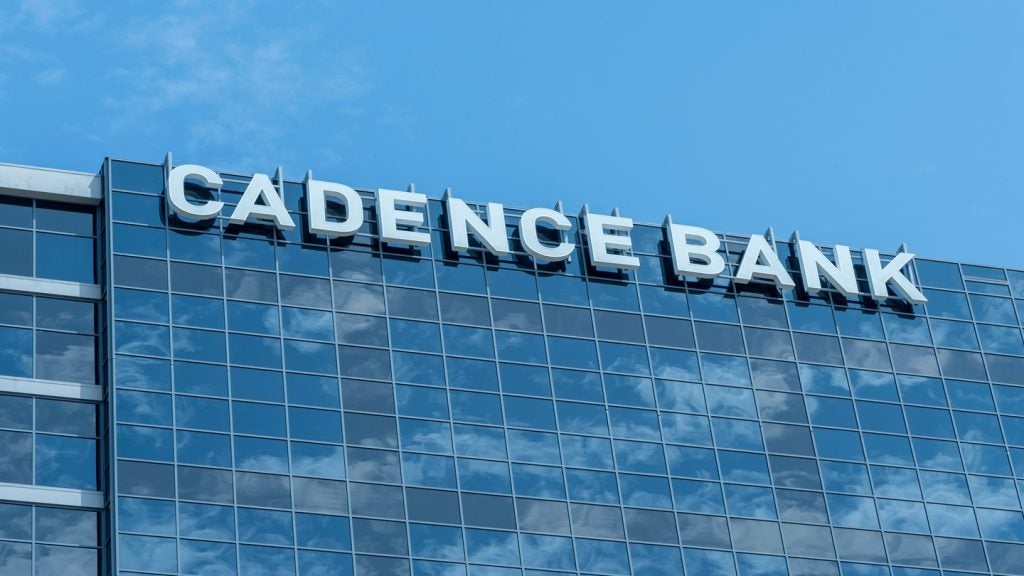consumer banking growth, despite an increasingly testing economic
climate in South Africa. Louis von Zeuner, the bank’s head of
retail banking, tells William Cain that the bank’s
focus on innovative distribution channels will help it reach more
customers and compete more effectively.
Louis von Zeuner, Absa’s retail banking CEO, believes the bank’s
consumer business can achieve double digit growth in 2008 – despite
tough conditions in the South African market. The country has been
hit with a 4.5 percent hike in interest rates since the middle of
2006 as the central bank tries to stave off surging inflation –
pushing consumer debt levels to breaking point. Von Zeuner told
RBI further interest rate rises would see consumers reach
levels of debt that could create a higher level of defaults.
“The biggest concern is, obviously, we are in a down cycle and we
know the cyclical nature of the retail business. In South Africa we
have had eight interest rate increases in the last 18 months. The
positive is we have stayed away from increases of 100 basis points
at a time to incremental increases, but it’s working through the
system and the concern is: how much more can the consumer
take?”
Von Zeuner said South Africa’s debt to disposable income ratio was
at about 77 percent while debt serviceability of consumers was
about 10 percent. He added 10 or 11 percent was “a maximum number”.
“One is concerned external events could push the consumer to an
unhealthy level, which is already testing where it is.”
It means Absa, 56 percent owned by UK banking group Barclays, is
bracing itself for a tough 2008 after strong growth in 2007. The
bank’s headline earnings for 2007 showed a 19 percent improvement
from the year before, to ZAR9.41 billion ($1.23 billion) from
ZAR7.87 billion. Retail banking made up ZAR5.07 billion of that, up
20 percent.
The bank managed to predict some of the turmoil in the consumer
markets, becoming more selective about some of its business. In
particular, it cut down on certain parts of its mortgage lending –
an area it felt would feel the pinch first. The bank also
strengthened its collections business.

US Tariffs are shifting - will you react or anticipate?
Don’t let policy changes catch you off guard. Stay proactive with real-time data and expert analysis.
By GlobalDataTalking about 2008 and beyond, von Zeuner said: “We do believe
there are adequate opportunities for growth. We tend to think about
the growth of previous years, and it would be substantially lower.
But if we talk about growth continuing in double digits, it’s
surely nothing to sneeze at.”

The biggest distribution network
A focus on distribution – in particular, innovative, diverse
branch-led customer service – will form a significant part of the
consumer banking growth. According to its own figures, Absa has the
biggest distribution network in South Africa and the biggest retail
customer base, at 9.8 million. It has added 251 ‘points of
presence’ since the beginning of 2007, taking its overall physical
distribution presence to 1,001, including traditional branches and
a range of mobile and temporary structures.
Von Zeuner said: “In the past, banks have typically used bricks and
mortar, but we have moved to sales-focused, almost temporary,
structures so we can redeploy our resources. We have a retail
customer base of 9.8 million and of that, we have moved the
’other-than-white’ part of that up from 56 percent to 58 percent.
That speaks of our distribution and ATM network. That’s supported
by a strong brand and great product offerings.”
Absa has markedly different approaches depending on what market
segment it is trying to address. At the lower income scale of the
retail banking market, which von Zeuner described as “almost
unbanked”, it operates a subsidiary called Allpay, which is used
for the disbursements of social grants and payment payouts. It
services over two million people and payments exceed ZAR1 billion
per month, with 1,400 service points in four provinces in the
country.
“It addresses a particular need. The vehicle for doing these
payments is literally taking banking on the back of a truck into
the deepest of rural areas and, through biometrics, giving grants
and benefits to people that are possibly illiterate. People are
able to have access to cash that otherwise would have been pretty
cumbersome and costly to get access to.”
Absa has a range of distribution methods that are deployed to serve
the banked population in rural areas or townships. One is a
temporary structure that can be moved to different locations and
gives access to cash and basic transactions. These branches cost
around 50 percent less than bricks-and-mortar outlets, and can be
used to test the feasibility of making Absa’s presence more
permanent in a particular area.
They are useful, said von Zeuner, if the bank wants to
opportunistically react to developments in local markets, such as
if a large shopping centre is soon to be opened. The units can be
manufactured and placed at a location within 28 days.
They come in three different types: full service, micro-loan and
microfinance formats, each in different sizes which can quickly be
extended if more capacity is needed. And, linked to the temporary
branch system, the bank operates a fleet of consultants in
vehicles, which von Zeuner said physically brought Absa closer to
customers and makes sure a complete range of products are
available.
Established retail franchise
relationships
Targeting the same market, the bank has established relationships
with retail franchises, allowing it to operate portable in-store
sales kiosks.
The bank has relationships with a variety of non-bank businesses,
using them to help give it access to specific consumer segments, or
keep down costs while maximising its distribution reach. These
include food retailer OBC Chicken and PC supplier Computer
Corporation – it has also just acquired a 50 percent stake in a
division of retail chain Woolworths (see below). In some cases, the
bank will deploy sales staff; in others it provides basic ATM and
point-of-sale facilities to give customers access to basic
services. It works particularly well, von Zeuner said, with food
retailers that draw in customers from a wide area in rural
communities.
Another method Absa uses is its “bank on wheels” concept, something
banks in many countries use to get products and services to remote
areas. The vans have ATM capabilities that allow for cash
withdrawals, account opening and transactional capabilities.
Although targeting a different type of customer, it runs a student
banking bus, which it positions at universities at peak times. For
the upper end of the market, Absa is targeting air passengers. It
is running a trial programme with 1time Airlines, a domestic
carrier, to position bank staff on board planes to handle any
banking enquiries.
Von Zeuner said: “There are many ways in which we serve the
community and we believe that is a differentiator – the fact we
have a distribution network which gives us convenience to the
consumer and easy access.”
Help from Barclays
Retail banking made up less than 50 percent of total headline
earnings for the first time in 2007 as the bank looked to diversify
by expanding its business into commercial and investment banking.
Expertise from Barclays has helped it develop in those areas, but
the relationship has been reciprocal. Absa has provided valuable
lessons to its UK parent on retail banking, and particularly how to
distribute products and services to Africa’s polarised and
geographically dispersed society.
Barclays is a keen admirer of its subsidiary’s innovative approach
and is looking to implement elements of the strategy in its new
emerging market operations in countries such as India, Pakistan and
Russia (see RBI 590).
Outside South Africa, Barclays and Absa are still thrashing out how
they will operate their businesses side by side in the rest of the
continent. Barclays operates in 10 countries, while Absa has equity
stakes in banks in Mozambique, Tanzania and Angola. Their
franchises overlap in one African country, Tanzania, and management
is trying to decide what the optimal structure to deal with that
is.
When Barclays bought its stake in Absa in 2005, it had been planned
that Absa would buy all of Barclays’ African businesses over the
medium term, but that agreement was ruled out in February. Absa
said the cost of the deal meant it was not viable any more.
Although Barclays is a majority shareholder at Absa, it has limited
control over the bank’s strategy in Africa. This is because there
would be a conflict of interests, with both businesses operating in
various countries in the continent, meaning any decisions regarding
African operations are made by the remaining 44 percent of Absa’s
shareholders.

Absa buys into Woolworths to grow cards
business
Absa has acquired a 50 percent plus one share stake in Woolworths
Financial Services (WFS) as it looks to establish a “consumer
finance house” approach to consumer banking. The South African bank
will pay around ZAR875 million ($109.5 million) if the deal
receives regulatory approval. It is also subject to a restructure
of WFS to include all existing financial service products at
Woolworths, a major food and clothing retailer in South
Africa.
The deal gives Absa the ability to distribute cards at the point of
purchase and increase its share of the consumer finance market. It
should be able to generate extra revenue in the business by better
using information on spending habits and upselling store card
customers on to credit cards. It will also benefit from Barclays’
experience of the joint venture model in the UK.
As of December 2007, Woolworths had financial services assets of
ZAR5.56 billion. The WFS business, which has a credit account base
of 1.6 million customers, includes store cards, personal loans and
Visa credit cards, as well as insurance products. Absa already has
plans to launch new financial products through Woolworths,
including a premium Barclaycard offering, which it has a licence
agreement to issue through its parent company, Barclays.
Doug Walker, Absa’s head of cards, told RBI: “We believe
that this model, transactions between banks and retailers, will
continue principally as a result of the increasing complexity in
the regulatory environment and the level of expertise and skills
required to successfully run a financial services business.
“Banks are generally better placed to fulfil this role. This model
allows retailers and banks to focus on their respective
competencies. The banks further benefit from increased access to
existing and new customers through the retail store distribution
channels.”
Absa has been looking into establishing joint ventures with
retailers for some time, a strategy most successfully demonstrated
by BNP Paribas’ consumer finance subsidiary, Cetelem. It is an
approach that is increasingly gaining currency in South Africa.
Standard Bank partnered with Edcon, one of South Africa’s leading
retailers, in 2005 and also works with another retailer, Foschini
Group.
Magnus Matthewson, senior analyst at stockbrokers Hitchens,
Harrison and Co, said: “I would say Absa has a competitive edge
over other South African banks, which have been operating in a more
insular market, because it’s owned by Barclays. It will have the
experience of Barclaycard, which is important coming into something
like this. Barclays have done a lot of white labelling in the
past.”
Other RBI sources in South Africa said they consider the
move by Absa a major development in the country’s consumer finance
market.







